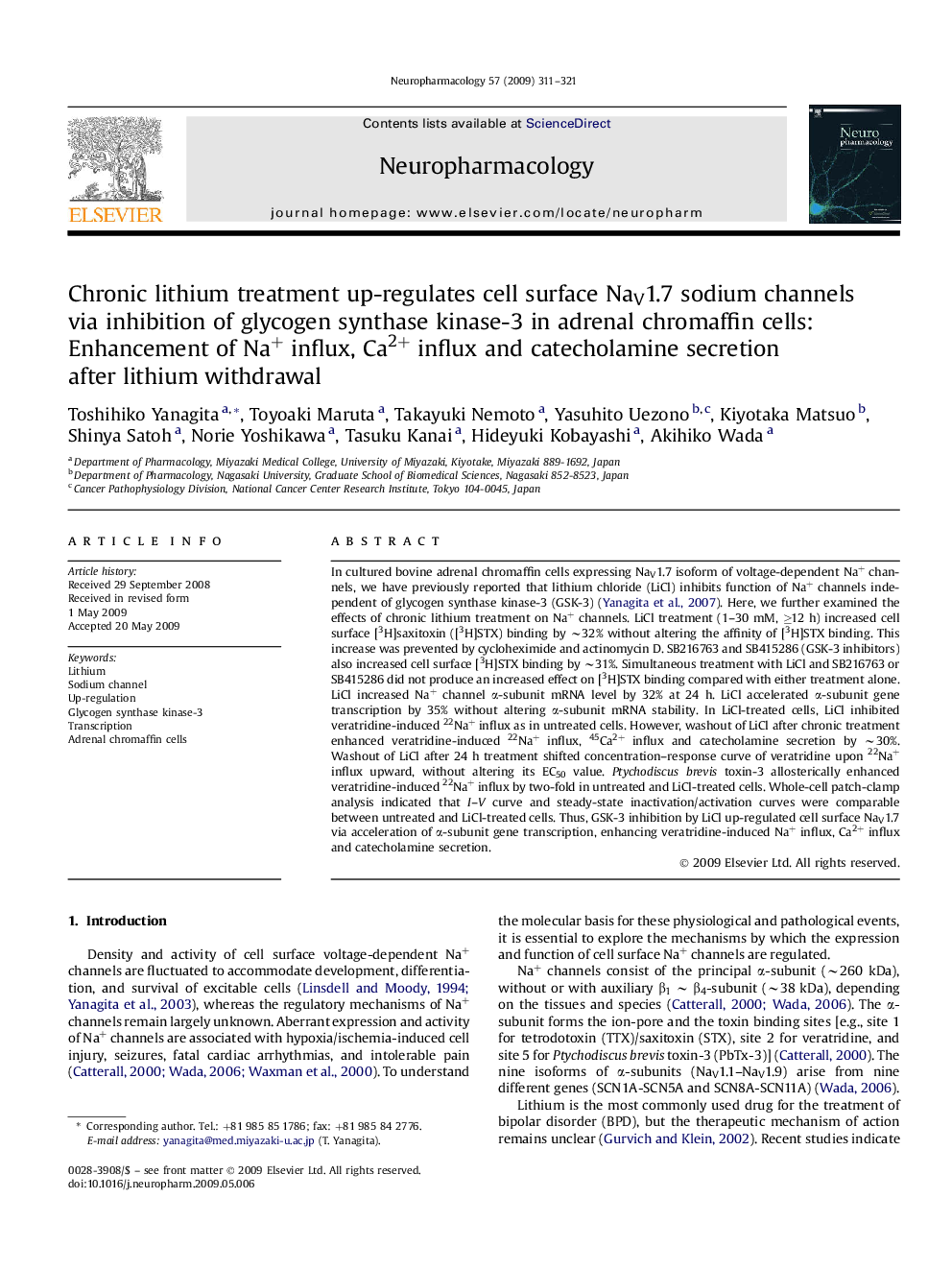| Article ID | Journal | Published Year | Pages | File Type |
|---|---|---|---|---|
| 2494217 | Neuropharmacology | 2009 | 11 Pages |
In cultured bovine adrenal chromaffin cells expressing NaV1.7 isoform of voltage-dependent Na+ channels, we have previously reported that lithium chloride (LiCl) inhibits function of Na+ channels independent of glycogen synthase kinase-3 (GSK-3) (Yanagita et al., 2007). Here, we further examined the effects of chronic lithium treatment on Na+ channels. LiCl treatment (1–30 mM, ≥12 h) increased cell surface [3H]saxitoxin ([3H]STX) binding by ∼32% without altering the affinity of [3H]STX binding. This increase was prevented by cycloheximide and actinomycin D. SB216763 and SB415286 (GSK-3 inhibitors) also increased cell surface [3H]STX binding by ∼31%. Simultaneous treatment with LiCl and SB216763 or SB415286 did not produce an increased effect on [3H]STX binding compared with either treatment alone. LiCl increased Na+ channel α-subunit mRNA level by 32% at 24 h. LiCl accelerated α-subunit gene transcription by 35% without altering α-subunit mRNA stability. In LiCl-treated cells, LiCl inhibited veratridine-induced 22Na+ influx as in untreated cells. However, washout of LiCl after chronic treatment enhanced veratridine-induced 22Na+ influx, 45Ca2+ influx and catecholamine secretion by ∼30%. Washout of LiCl after 24 h treatment shifted concentration–response curve of veratridine upon 22Na+ influx upward, without altering its EC50 value. Ptychodiscus brevis toxin-3 allosterically enhanced veratridine-induced 22Na+ influx by two-fold in untreated and LiCl-treated cells. Whole-cell patch-clamp analysis indicated that I–V curve and steady-state inactivation/activation curves were comparable between untreated and LiCl-treated cells. Thus, GSK-3 inhibition by LiCl up-regulated cell surface NaV1.7 via acceleration of α-subunit gene transcription, enhancing veratridine-induced Na+ influx, Ca2+ influx and catecholamine secretion.
